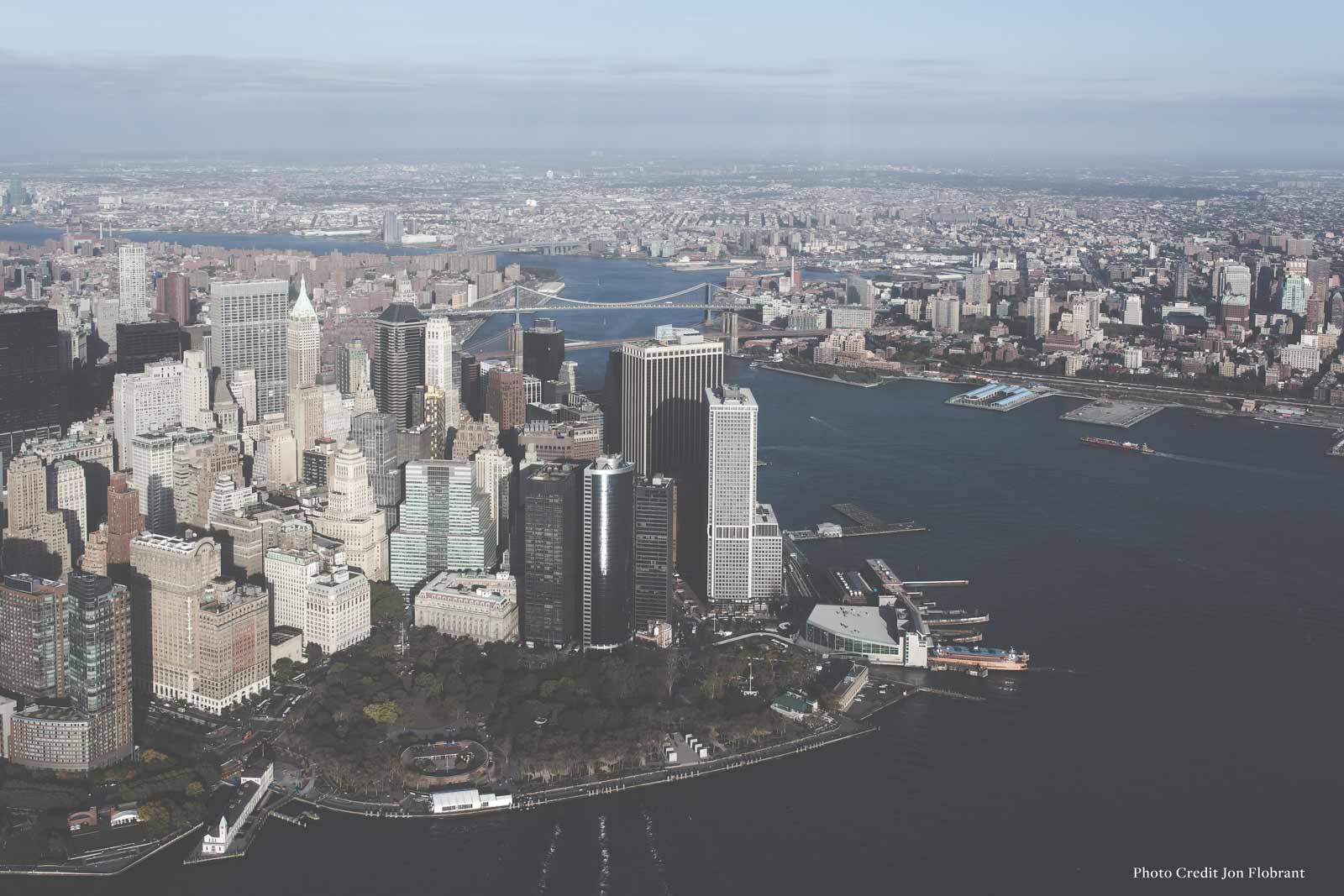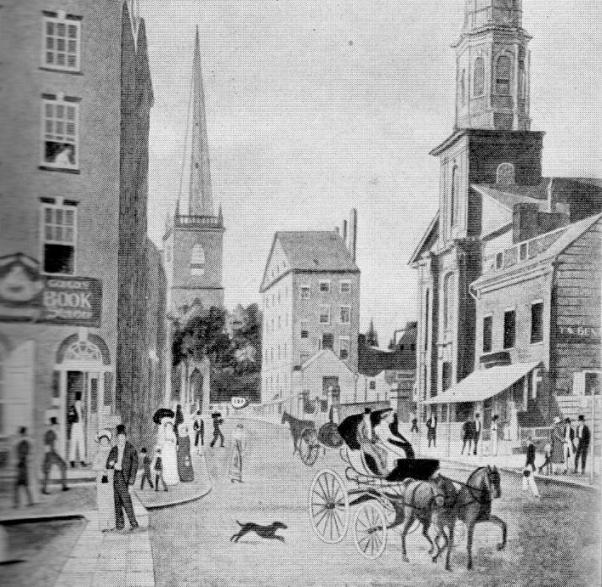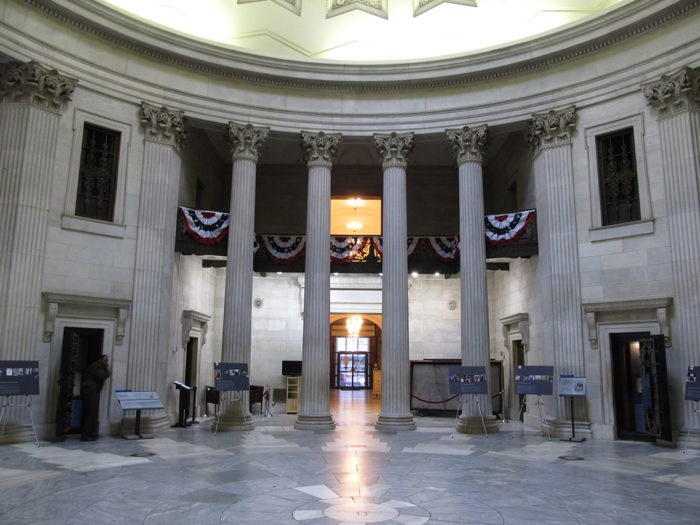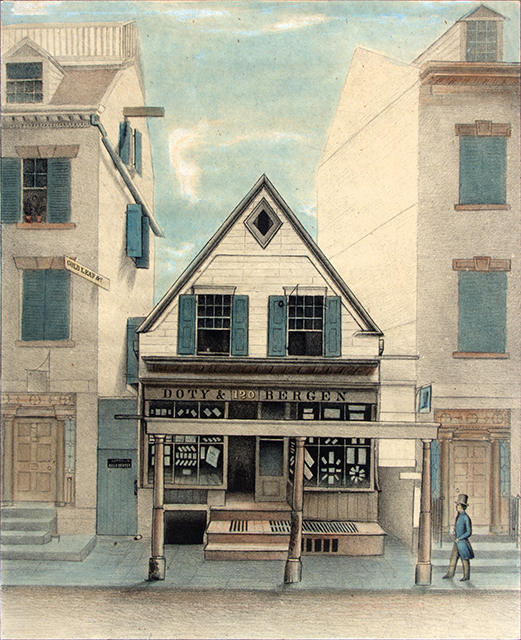Even before the first Europeans landed, the area of lower Manhattan now known as the Financial District was a center of trade. Rather than stocks being bought and sold in glass-and-steel skyscrapers, however, Native American tribes such as the Algonquin would travel the Wiechquaekeck Trail to trade the likes of corn, dried fish, ropes, tobacco, and animal pelts. It was those pelts that led to the area becoming New Amsterdam before evolving into part of New York.
When Giovanni da Verrazzano (the bridge that connects Staten Island and Brooklyn misspells his name as Verrazano) landed along the southern tip of Manhattan Island in 1524, he named it New Angoulême in honor of his patron, King Francis I of France, the former Count of Angoulême. The French apparently did not see much potential for this land. Less than a century later, however, the Dutch did, thanks to Henry Hudson, who explored the area in 1609 as part of his efforts to find the elusive Northwest Passage to Asia.
While Hudson failed to find a shortcut to Asia, he did discover this portion of the New World was rich in beavers. In Europe beaver pelts were in demand for use in waterproof garments, and a secretion of their glands was used for medicines and perfumes. The Dutch sent subsequent expeditions, established settlements, and began trapping beavers and exchanging cookware, weapons, and wampum with the Native Americans for additional pelts. The Dutch claimed much of what is now Connecticut, New York, New Jersey, and Delaware as New Netherlands, and in 1625 named as New Amsterdam what is now the Financial District.
Developing around Fort Amsterdam, New Amsterdam became the capital of this new Dutch province. It was during this time that one of the first streets in Manhattan was named: Beaver Street, which later became home to the city’s first synagogue. In 1653 another key street was constructed, named after the 12-foot wall that protected the settlement’s northern boundary: Wall Street.
Wall Street in 1825.
[Image: Wikimedia/Public Domain]
Just as the potential wealth of the region caught the eye of the Dutch, the thriving Dutch colony caught the attention of the English. In 1664 four English frigates landed in New Amsterdam to demand that director-general Peter Stuyvesant surrender the colony, which he did (and which is why you are reading this in English rather than in Dutch). One year later New Amsterdam became New York, named after the Duke of York, the future King James II.
By the time of the American Revolution, lower Manhattan was a loyalist stronghold. Nonetheless, shortly after the last of the British fled the city, on November 25, 1783, General George Washington held his farewell dinner to the officers of the Continental Army is Fraunces Tavern, which still stands as a bar and restaurant in the Financial District.
What’s more, in 1789 New York became the first capital of the nascent United States, with Congress meeting at Federal Hall on 26 Wall Street. It was here that Washington was inaugurated at the nation’s first president and the Bill of Rights was introduced. When the capital was moved to Philadelphia in 1790, Federal Hall became the de facto city hall until the construction of the current New York City Hall in 1812, and the building was demolished. The building that stands at 26 Wall Street today, the Federal Hall National Memorial, was built in 1842 as the U.S. Custom House.
Inside the Federal Hall National Memorial.
[Image: Ken Lund/Flickr]
The bustling port of New York Bay attracted numerous traders, not just of tangible goods but also of stocks. On May 17, 1792, 24 stockbrokers gathered under a buttonwood tree outside 68 Wall Street to sign the Buttonwood Agreement, which led to the development of the New York Stock & Exchange Board; in 1863 its name was shortened to the New York Stock Exchange.
The seaport became even busier with the opening of the Erie Canal in 1825, which gave it direct access to the ports of the Great Lakes. Following the money, businesses clustered around the bay, and most residents moved farther uptown and inland. To accommodate the numerous traders and other businesses that wanted to be in the midst of the action, many of the city’s first skyscrapers were constructed.
The last of the New Amsterdam buildings, the Rigging House was destroyed in the mid-1800.
[Image: Henry R. Robinson/Wikimedia/Public Domain]
Today little remains of New Amsterdam, other than much of the Financial District’s street layout. The last of the Dutch buildings was demolished in the mid-1800s. The Alexander Hamilton U.S. Custom House now sits on the original site of Fort Amsterdam, which itself sat at the foot of the Wiechquaekeck Trail. And as if to demonstrate the sometimes circular nature of history, the building also houses the New York branch of the National Museum of the American Indian.





